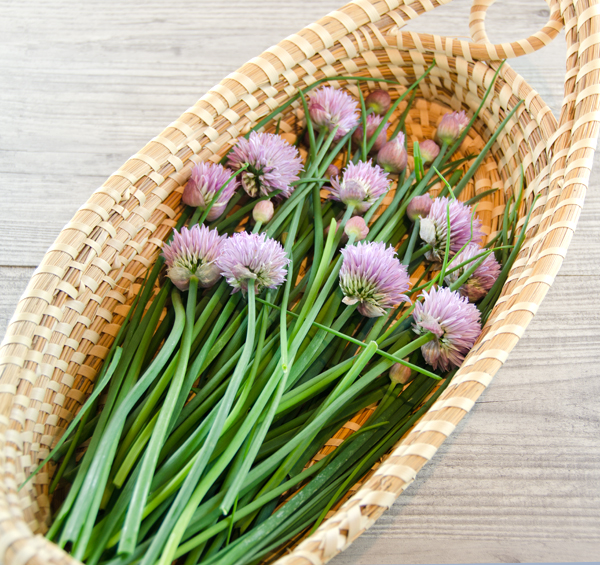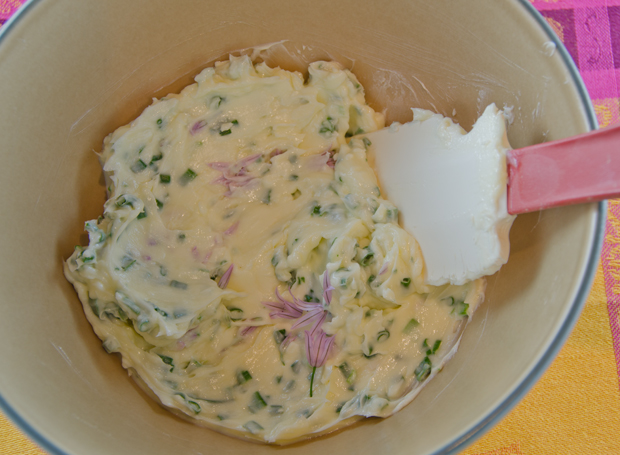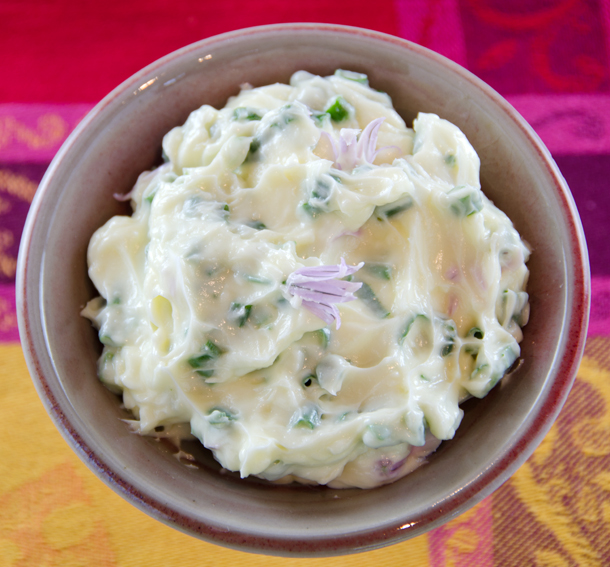Martha was the first to introduce me to compound butters. Over thirty years ago when I was first married I spent a lot of time in bookstores paging through volumes of my new found interest, cookbooks. I always knew that I would enjoy cooking and Joe and I were beginning to enjoy preparing meals for ourselves and entertaining friends in our townhouse. One of the first books that really caught my attention was Entertaining, Martha Stewart’s first cookbook. At first I wasn’t sure if Martha was just a model for the book cover or in fact, the author. Actually both were true, she was a model through college and she had written the book from her experiences as a caterer. I was fascinated with the layout of the book, each chapter was a different type of party. Cocktail parties, dinner parties, holiday parties, the omelette party, eventually I would become familiar with them all. At that time I wasn’t sure if I could justify the thirty-five dollars for this beautiful book. Fortunately, a dear friend loaned me the copy she had received as a wedding gift and I had it on a long term loan (thanks Wilma!).
Back to the butters, Entertaining had a recipe for fruit butter to accompany muffins and sweet breads and an herb butter to serve along with homemade savory breads. As my well worn copy of the book would attest, yes I did break down and buy it, I have made them many times, for our parties and as a caterer, for countless occasions. Herb butter is a compound butter which simply means butter creamed with another ingredient, whether it’s herbs, garlic, shallots, or honey or jam in the case of sweet butters. Compound butters can be made at any time but it’s a great way to preserve and enjoy herbs at their peak. Right now and at the end of summer, chives flower and show new growth. I kept the recipe simple this time, just chives, sea salt and a little lemon peel. It’s great on fish, vegetables, steak, maybe even mixed into some freshly popped popcorn. Just bring butter to room temperature and stir in finely minced herbs. You can do the mincing with either a knife or scissors. Using unsalted butter allows you to add salt, but to your own liking. Chives can be used in combination with other herbs, tarragon, parsley and dill to name a few.
Martha came out with a update to her Entertaining book last year, this time it’s called, Martha’s Entertaining: A Year of Celebrations. Seventy five dollars, weighing in at six pounds, about a hundred plus more pages and yes, a recipe for a compound butter. This time it’s a garlic and herb butter to accompany her garden crudites for a luncheon. Can’t wait to try that one too.

Chive Butter
Makes 8 ounces
Ingredients
- 2 sticks of unsalted butter
- 1/4 c finely chopped chives (you can include flower buds also)
- 1/4t finely minced lemon peel
- Sea salt to taste
Directions
- In a large bowl, mash the butter with a potato masher.You can even cream the butter using the paddle attachment of a stand mixer or in the bowl of a food processor.The goal is just to get the butter soft so you can incorporate the chives.
- Add the chopped chives and continue mashing/mixing the butter until fully incorporated. Mix in the lemon peel and salt to taste.
- Spread out a large (1-foot or bigger) square of plastic wrap across your work surface. Spoon the butter out in a band about 1 inch wide on the bottom third of the plastic. Tightly roll up the butter in the plastic to form a log. Grab the excess plastic at both ends of the log and twist the ends in opposite directions. The cylinder should be taut and as round as possible.
- Tie the excess plastic wrap at the ends of the cylinder into a knot, or just use little pieces of string to tie off the ends.
- To store the butter, wrap the plastic covered log tightly in aluminum foil and refrigerate for up to a week or freeze for up to 3 months.



